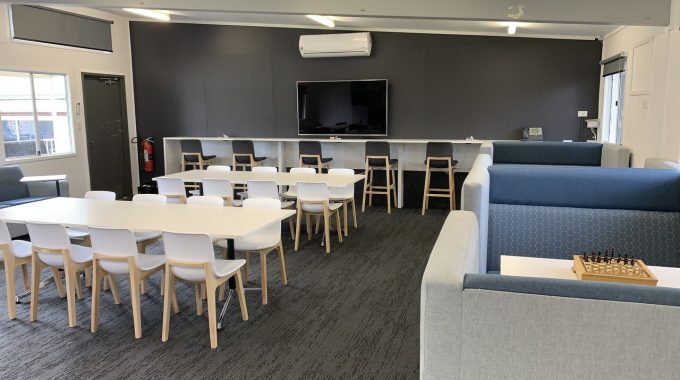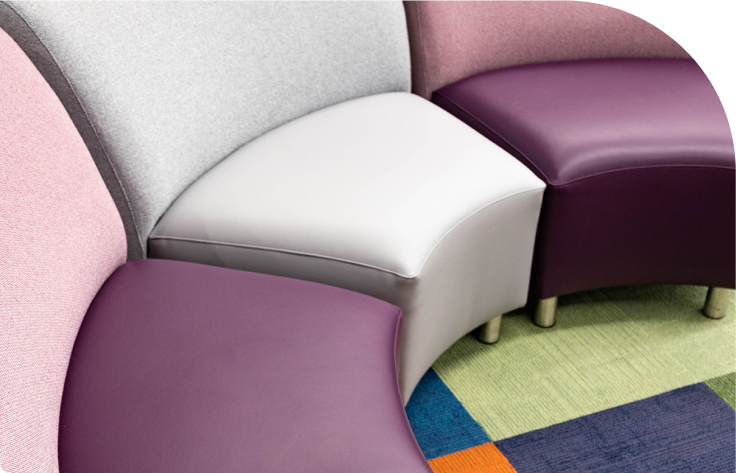STEM Classroom Design Ideas: Creating Effective Learning Environments

The subjects of science, technology, engineering, and mathematics (STEM) have been around for decades; however, the importance of implementing an effective STEM classroom design is relatively new. Traditional classrooms may work for lecture-based lessons, but the hands-on activities involved in the STEM curriculum require a different learning space that encourages creativity, teamwork, and practical skill development. Creating a well-designed STEM learning environment can greatly impact student engagement and learning outcomes.
Important Components of STEM Classroom Design
The main components of an effective STEM classroom:
1. Flexible Classroom Designs
STEM classrooms are most effective when designed to support various activities, including collaborative projects and hands-on learning. Instead of traditional seating arrangements, flexible STEM classrooms utilise the space more efficiently. For example, larger classrooms and collaboration rooms provide a creative use of space that is adaptable to group learning, study sessions, and after-school activities. This flexibility allows educators to switch between several learning modes without disrupting the flow of education.
2. Mobility in STEM Classroom Layout
A key element of a flexible classroom is mobility. Education furniture such as tables, desks, chairs, and whiteboards should be lightweight and on wheels so that the students and teachers can personalise the area. Mobile furniture supports quick transitions between different classroom setups, enabling students to take control of their learning environment and arrange it to best suit their current project needs.
3. Technology Integration in STEM Education
Technology plays a crucial role in STEM education and should be available to all students. Laptops, tablets, and other technologies help students to work in teams, research their ideas, and design solutions. These classrooms should always be connected to the internet and have enough electrical outlets and data capabilities to give students access to vital resources anywhere in the classroom. Effective technology integration promotes digital literacy while reinforcing core STEM concepts.
4. Organised Storage Solutions
STEM classes contain various gadgets and equipment; therefore, clutter can quickly disrupt the flexible design. With different subjects being taught in the same room, it requires maximum organisation. Utilising mobile storage provides organisational solutions to store any equipment and project materials. Well-structured storage systems keep materials readily accessible while maintaining an organised learning environment.
5. Collaborative Learning Spaces
STEM classrooms should be designed to encourage collaborative learning. Creating a free-flowing layout is perfect for project-based learning as it allows students to explore and solve problems both individually and in a team. Collaborative spaces support brainstorming, building, and experimenting, encouraging students to work together to find solutions. Interactive whiteboards and displays are also important features of successful STEM classrooms, as they enable students to gather around an area and collaborate. It is also critical that these spaces allow teachers to move freely around the room to assist and monitor the students’ work.
6. Sustainable Design Practices
A well-designed STEM classroom promotes critical thinking, problem solving, innovation, and teamwork, which are vital for tackling today’s environmental challenges. Sustainable classrooms incorporate features that benefit both people and the planet, including natural lighting, indoor air quality, and sustainable classroom furniture, thus teaching students about sustainability by setting an example in the classroom.
Essential Furniture for STEM Classrooms
Choosing the right furniture is crucial for creating an effective STEM learning environment. The following table highlights key furniture elements that every STEM classroom should include:
| Furniture Type | Advantages | Considerations |
| Height-adjustable tables | Supports different activities and student heights | Durable construction with easy adjustment mechanisms |
| Mobile seating options | Enables quick transitions between work modes | Lightweight, stackable designs for maximum flexibility |
| Storage solutions | Keeps materials organised and accessible | Transparent options to display STEM materials |
| Mobile whiteboards | Facilitates collaborative problem-solving | Double-sided and easy to reposition |
| Modular workstations | Creates designated areas for specific activities | Adaptable based on changing needs |
Abax Kingfisher offers full classroom furniture options specifically designed for STEM learning environments that meet these key requirements.
Creating Zones in Your STEM Learning Environment
An effective STEM classroom has distinct zones for various learning activities. Consider including:
- A design thinking zone with comfortable chairs and writable surfaces
- A prototyping area with sturdy workbenches and access to tools
- A presentation space with digital display capabilities
- A quiet reflection zone for individual work and research
- A testing area where students can experiment with their creations
These zones should be flexible enough to be rearranged as needed, enabling teachers to modify the area based on daily learning objectives and student needs. This approach to STEM classroom layout provides students with proper spaces for each stage of the design thinking process.
The Impact of Environment on STEM Learning Outcomes
Research consistently shows that the physical environment has a major impact on student success. Innovative STEM classroom setups can boost student engagement by creating spaces that mirror real-world working environments. When students work in collaborative and hands-on learning environments, they develop a deeper understanding of STEM concepts and retain information longer.
A welcoming STEM classroom environment also helps students overcome intimidation towards STEM subjects, promoting inclusivity and participation from diverse learners. The right design encourages all students to engage actively with the curriculum regardless of their starting comfort level with STEM topics.
Partner with Abax Kingfisher for Your STEM Classroom Transformation
Creating an innovative STEM learning environment has never been easier. At Abax Kingfisher, we specialise in custom, eco-friendly furniture designed to enhance hands-on learning while ensuring durability, safety, and sustainability.
With on-time delivery and seamless installation, we can transform your STEM classroom in just two weeks. Our design specialists work with you to create a space that fits your budget and timeline, offering free 3D designs so you can visualise the transformation before making any commitments.
For more information about designing an effective STEM classroom, contact Abax Kingfisher, Australia’s leading education furniture suppliers, on 1300 300 369 or explore our extensive range of STEM classroom furniture solutions online today.









